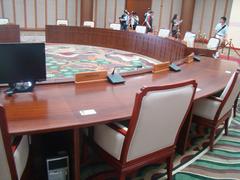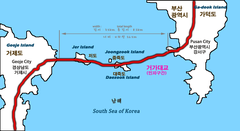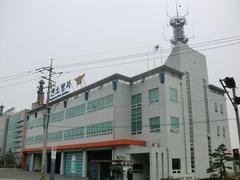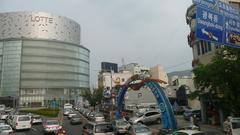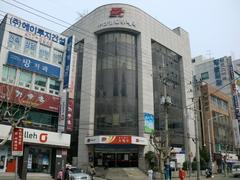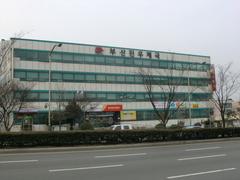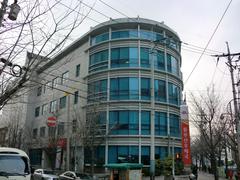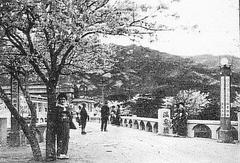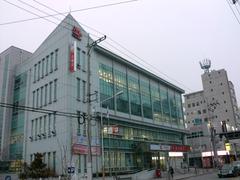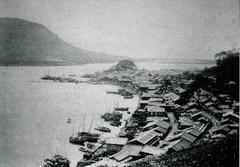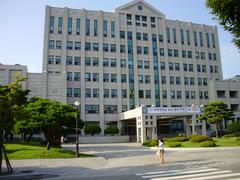
Nambusan Post Office Visiting Hours, Tickets, and Busan Historical Sites Guide
Date: 03/07/2025
Introduction to Nambusan Post Office and Its Significance
Nestled in the heart of Busan, South Korea, the Nambusan Post Office represents far more than a center for mail and parcels. It serves as a living testament to the city’s vibrant history, the evolution of Korea’s postal system, and the blending of tradition with modernity. Established during a transformative era marked by foreign influence, colonial occupation, and eventual independence, the post office reflects Busan’s progression from a treaty port to a major urban hub. Its architectural character, merging colonial red brickwork and Korean motifs, stands as a symbol of the city’s resilience and eclectic urban landscape (Wikipedia; Namu Wiki; e-a-a.com; omniversemarketplace.com).
Positioned conveniently in either the Nam-gu or Nampo-dong district, Nambusan Post Office is close to Busan’s major transport nodes and tourist destinations like Jagalchi Fish Market and Yongdusan Park (Torntackies; Visit Busan). Its services extend from postal and financial operations to philatelic sales and community events, welcoming both residents and travelers with accessible facilities and multilingual support (Korea Post; Korea Trip Guide). With no admission fees and regular exhibitions, it’s a must-visit for anyone wanting to delve into Busan’s dynamic heritage.
Contents
- Introduction
- Early Postal Services in Busan
- Establishment of the Korean Postal System
- Stamps and Postal Artifacts
- Japanese Colonial Rule and Busan’s Postal Services
- Liberation and the Modern Era
- Practical Visitor Information
- Visiting Hours
- Admission
- Guided Tours
- Accessibility
- Location and Transport
- Nearby Attractions
- FAQ
- Architectural and Cultural Insights
- Visitor Tips
- Conclusion
- References and Further Reading
Early Postal Services in Busan: Foreign Influence and Opening Korea
Busan’s postal journey began in the late 19th century, as Korea emerged from isolation following the Japan–Korea Treaty of 1876. This agreement allowed foreign powers, especially Japan, to establish consulates and introduce postal services in Busan—sometimes without Korean government consent. Reformers like Hong Yeong-shik, inspired by overseas systems, advocated for a domestic network, setting the stage for Korea’s own postal modernization (Wikipedia).
Establishment of the Korean Postal System and Busan’s Role
Korea’s first official post office, Ujeongchongguk, opened in Seoul in 1884. Busan, as a vital treaty port, quickly became integral to this network, connecting major cities and facilitating international mail. Korea’s entry into the Universal Postal Union in 1900 further elevated Busan’s status as a global communications hub (Wikipedia).
Stamps and Postal Artifacts: Busan’s Early Postal Heritage
Korea’s first stamps debuted with the postal service in 1884, featuring culturally significant motifs like lotus petals and taegeuk symbols. The destruction of the Seoul post office during the Gapsin Coup limited their circulation, but subsequent issues, including the renowned “Plum Blossom” series, are still celebrated in philatelic circles (Wikipedia).
Japanese Colonial Rule and Busan’s Postal Services
Under Japanese annexation from 1910, Busan’s postal operations were absorbed into the imperial network. Japanese stamps, often overprinted with Korean characters, became standard. Busan’s strategic position as a port city ensured its continued importance in regional and international mail movement (Wikipedia).
Liberation, Transition, and the Modern Era
Post-1945 liberation saw Korea reclaim its postal system, with transitional stamps marking the change. Busan’s post office, evolving into the present Nambusan Post Office, now anchors a network of local branches and remains central to South Korea’s postal infrastructure (Namu Wiki).
Visitor Information: Nambusan Post Office
Location
- District: Nam-gu or Nampo-dong, Busan
- Nearby: Gwangalli Beach, Jagalchi Market, Yongdusan Park, Namcheon Station
- Address: Check Korea Post or Visit Busan for precise details.
Visiting Hours
- Monday–Friday: 9:00 AM – 6:00 PM
- Saturday: 9:00 AM – 1:00 PM
- Closed: Sundays and public holidays
(Hours may vary on holidays—verify before your visit)
Admission and Tickets
- Entry: Free; no reservations required
- Souvenirs: Commemorative stamp sales available
Accessibility
- Fully accessible: Ramps, elevators, tactile paving, accessible counters
- Multilingual signage: Korean and English
Services
- Domestic/international mail and parcels
- Express and registered services
- Financial services: savings, remittances, bill payments, currency exchange
- Philatelic sales and information desk
- Community notice boards, local event info
Guided Tours & Exhibitions
- Occasional philatelic or cultural exhibitions
- Group tours available upon advance request during special events
Getting There
- Metro: Nearest is Namcheon (Nam-gu) or Nampo (Nampo-dong) Station; 5–10 min walk (A Fun Couple)
- Bus: Numerous lines stop nearby; use T-money cards for convenience
- Taxi/Ride-Hailing: Kakao Taxi app supports English
- On Foot: Flat, pedestrian-friendly streets
Nearby Attractions
Combine your post office visit with these Busan highlights:
- Jagalchi Fish Market: Largest seafood market in Korea (Torntackies)
- Gukje Market: Traditional crafts, food, and local flavor
- BIFF Square: Film culture and street food
- Yongdusan Park & Busan Tower: Views of the city and harbor (A Fun Couple)
- Geumryeonsan Mountain & Gwangalli Beach: Nature and recreation
Frequently Asked Questions (FAQ)
Q: What are the Nambusan Post Office visiting hours?
A: Monday–Friday, 9:00 AM–6:00 PM; Saturday, 9:00 AM–1:00 PM; closed Sundays and public holidays.
Q: Is there an admission fee?
A: No, entry is free.
Q: Are guided tours available?
A: Occasionally, during exhibitions or by advance request for groups.
Q: Is the post office accessible?
A: Yes, with ramps, elevators, and accessible counters.
Q: Can I send international parcels?
A: Yes, full international mailing and tracking services are available.
Architectural and Cultural Insights
The Nambusan Post Office is a microcosm of Busan’s architectural evolution—combining colonial-era design with modern upgrades (e-a-a.com; omniversemarketplace.com). Its red brickwork, arched windows, and tiled eaves reflect both its historical roots and its ongoing relevance. Inside, the space is bright, functional, and welcoming, with digital kiosks and community notice boards enhancing the visitor experience.
As a neighborhood anchor, the post office hosts occasional cultural events, philatelic exhibitions, and displays on postal history, connecting locals and visitors to Busan’s rich civic life (Korea Trip Guide).
Visitor Tips
- Bring identification (passport) for certain transactions
- Write addresses in both Korean and English for accuracy
- Use Naver Maps or KakaoMap for navigation
- Time your visit to avoid lunchtime or late afternoon crowds
- Check the official Busan city website or Visit Busan portal for updates
Conclusion
The Nambusan Post Office is more than a place to send mail—it’s a vibrant intersection of Busan’s history, architecture, and community life. Whether you’re exploring the city’s heritage or seeking practical services, the post office offers a welcoming stop in the heart of Busan. With accessible facilities, informative exhibitions, and proximity to top attractions, your visit will be both enriching and convenient. Don’t miss the chance to explore this living monument to Korea’s past and present.
References and Further Reading
- Postage stamps and postal history of Korea, Wikipedia
- Busan Regional Post Office, Namu Wiki
- 10 Best Architectural Buildings in Pusan, South Korea, EAA Architecture Guide
- The Architectural Landscape of Busan, Omniverse Marketplace
- Busan Travel Guide, AsiaRa Holidays
- Busan: A Historical Journey, Open Korea
- Cultural Exploration Around Nam-gu, Korea Trip Guide
- Visiting Busan Guide, Road Affair
- Busan Itinerary, Hey Roseanne
- Things to Do in Busan, The Wandering Quinn
- Busan Official City Website
- Visit Busan Portal
- Korea Post Official Website


